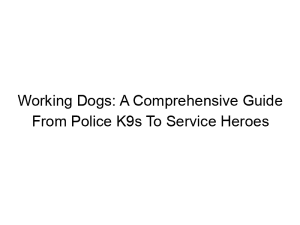Is your dog pulling you down the street like a runaway sled? Does leash walking feel more like a wrestling match than a pleasant stroll? This comprehensive guide will teach you how to train your dog to walk on a leash without pulling, transforming your walks from a battle of wills into a relaxing and enjoyable experience for both of you. We’ll cover everything from choosing the right equipment to mastering advanced techniques, ensuring you and your canine companion have happy, harmonious walks for years to come.
Loose-leash walking is a training method that teaches your dog to walk calmly beside you, without pulling or lagging behind. It’s not just about controlling your dog; it’s about building a positive connection and fostering a respectful relationship based on clear communication.
Beyond the obvious benefit of pleasant
walks, loose-leash walking is crucial for your dog’s safety and well-being. A pulling dog is more likely to bolt into traffic, get tangled in obstacles, or injure themselves or others. Proper leash walking also establishes your dog’s position in the pack, enhancing obedience and reducing stress.
Essential Equipment for Loose-Leash Training
The right equipment makes a huge difference. A standard flat collar is fine for some dogs, while others may benefit from a harness or head halter. We’ll explore the pros and cons of each.
Flat Collars:
Simple and widely used, but can be harsh if the dog pulls excessively. A properly fitting collar is crucial.
Harnesses:
Various types exist; some can actually encourage pulling while others distribute pressure more evenly. Research different types (front-clip, back-clip) to find what suits your dog best.
Head Halters:
These gently redirect the dog’s head when they pull, discouraging the behavior. However, they require proper introduction and use to avoid causing fear or discomfort.
Leashes:
Choose a leash that’s comfortable for you and your dog. A 6-foot leash is generally recommended for training.
Positive Reinforcement: The Foundation of Success
Positive reinforcement techniques, which focus on rewarding desired behaviors, are the most effective way to train loose-leash walking. Avoid punishment-based methods, as these can damage your relationship with your dog and make training more difficult.
Step-by-Step Training Process: From Zero to Hero
This section will detail the step-by-step process of teaching loose-leash walking, from introducing the leash to handling distractions.
Step 1: Leash Familiarization:
Start indoors, letting your dog get used to the feeling of the leash without pulling.
Step 2: Walking in Short Bursts:
Begin with short walks, rewarding your dog for walking calmly beside you. Immediately stop or change direction if they pull.
Step 3: Introducing Distractions:
Gradually increase the level of distractions (e.g., other dogs, traffic) and continue rewarding calm walking.
Step 4: Advanced Techniques:
Explore techniques like changing directions frequently, using different walking speeds, and incorporating “about turns.”
Dealing with Common Pulling Problems
Even with consistent training, you may encounter challenges. Here’s how to address some common issues.
The Exuberant Puller:
Focus on frequent rewards and short training sessions.
The Distracted Wanderer:
Use high-value rewards and gradually increase the level of distractions.
The Fearful or Anxious Puller:
Address underlying anxieties, perhaps with professional help. Patience and positive reinforcement are key.
Choosing the Right Harness or Collar
The type of harness or collar you choose significantly impacts your training success. This section will delve into the features of various equipment.
Front-Clip Harnesses:
These harnesses gently steer the dog’s body when they pull. They are often effective for dogs who are strong pullers.
Back-Clip Harnesses:
These harnesses are less effective for preventing pulling and may even encourage it. Suitable for less strong pullers, mostly for comfort.
Head Halters (Gentle Leaders):
These halters use gentle pressure on the nose and muzzle to redirect the dog. They require careful introduction and monitoring.
The Role of Treats and Rewards
Rewards are crucial in positive reinforcement training. This section delves into the type of treats and reward systems.
High-Value Treats:
These are treats your dog finds irresistibly delicious, making them highly motivating for training.
Reward Timing:
Rewards should be given immediately after your dog performs the desired behavior. Consistent timing is crucial.
Praise and Affection:
Combine treats with verbal praise and petting to create a positive training experience.
Beyond the Basics: Advanced Loose-Leash Walking Techniques
Once your dog has mastered basic loose-leash walking, you can further refine their skills.
Heel Work:
Teach your dog to walk closely at your side.
Walking in Crowded Areas:
Practice walking calmly in busy environments.
Walking with Other Dogs:
Teach your dog to walk politely alongside other dogs, without pulling or interacting aggressively.
Troubleshooting Common Issues
Addressing common problems with effective solutions.
Pulling on the Leash:
Try a different harness or collar. Implement short training sessions, and use a “stop and go” approach.
Lunging at Other Dogs or People:
Increase distance from triggers, reward calm behavior, and seek professional help if necessary.
Fear-Based Pulling:
Address the underlying anxiety with training and, if necessary, veterinary or behavioral consultation.
The Importance of Patience and Consistency
Consistency is key. Keep training sessions short and positive. Celebrate small victories and adjust your training approach based on your dog’s responses.
Integrating Loose-Leash Walking into Your Daily Routine
Make loose-leash walking a part of your dog’s daily routine, so the training becomes a natural part of your relationship.
Loose-Leash Walking and Different Dog Breeds
Different breeds have different temperaments and training needs. For instance, strong, independent breeds like Huskies or German Shepherds may require more patience and consistent training. Smaller breeds might be quicker to grasp the basics.
Comparing Different Training Methods
There are other training methods, such as using shock collars. However, positive reinforcement consistently proves to be the most effective and humane approach, building a stronger bond between you and your dog. Avoid methods that rely on fear or pain.
The Long-Term Benefits of Loose-Leash Walking
The benefits extend beyond pleasant walks. It builds a strong bond, enhances obedience, improves your dog’s socialization, and ensures safety. It transforms your relationship with your dog, shaping a stronger and more harmonious partnership.
Frequently Asked Questions
What is the best type of leash for loose-leash training?
A 6-foot leash is generally recommended for loose-leash training. Avoid retractable leashes, as they can make it harder to control your dog.
How long does it take to train a dog for loose-leash walking?
This varies depending on the dog’s age, breed, temperament, and previous experiences. Some dogs learn quickly, others may take longer. Consistency is key.
My dog pulls even with a harness. What should I do?
Try a different type of harness, perhaps a front-clip harness. Ensure it’s the correct size and adjust the straps properly. Re-evaluate your training methods and try shorter, more frequent training sessions.
How can I prevent my dog from pulling when encountering other dogs?
Introduce your dog gradually to other dogs at a distance where they remain calm. Reward calm behavior consistently. If pulling is severe, seek professional guidance.
Should I use a choke chain or prong collar?
No, these tools can be harsh and harmful, potentially causing injury and fear. Positive reinforcement methods are far more effective and kinder.
Final Thoughts
Mastering loose-leash walking is a journey, not a race. With patience, consistency, and positive reinforcement, you can transform your walks with your dog into enjoyable experiences. Remember to celebrate the small victories, adapt your training approach as needed, and prioritize your dog’s comfort and safety. By building a positive relationship and using clear communication, you’ll enjoy years of happy, harmonious walks together. Keep practicing, and you’ll soon see the positive changes in your dog’s behavior and your relationship. Your patience and dedication will pay off handsomely!




